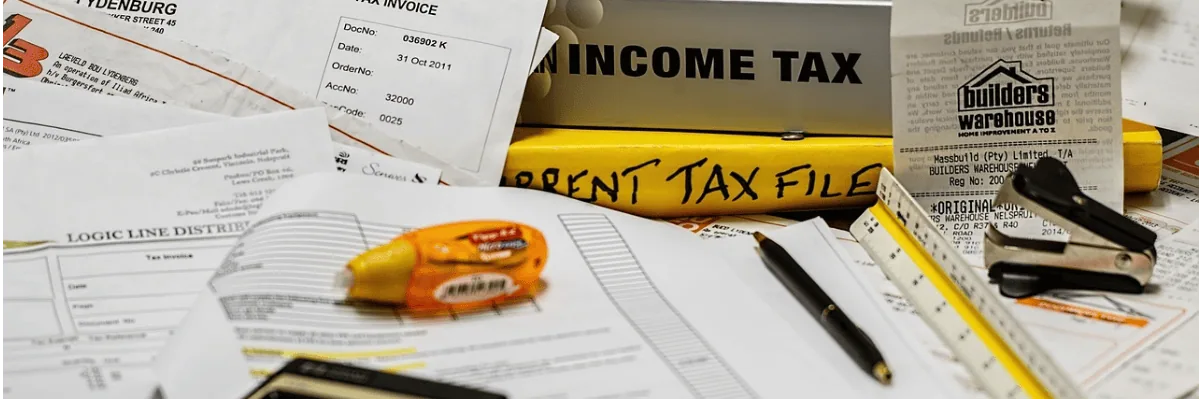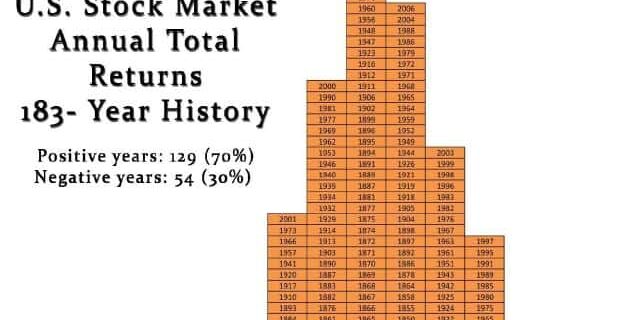Tax-Loss Harvesting in Canada
Tax-loss harvesting helps Canadians minimize the taxes that they pay on investment gains made outside of their RRSP and TFSA. What Canadian doesn’t want to save money on taxes Am-I-Right?!
That said, getting the details correct is important, as there are a few trip wires that can ruin your overall plan, and have you leaping into higher tax brackets that you never meant to step foot in. Read on to find out more about what tax-loss harvesting is, the limits involved, carrying tax losses forward, and how the tax-loss harvesting 30-day rule works.
What is Tax-Loss Harvesting?
At its core, tax-loss harvesting involves selling an investment at a loss – to then offset taxable capital gains. In Canada, 50% of your capital gains are taxable, which means offsetting gains with losses can lead to considerable tax savings. For a quick reminder of exactly what capital gains are, you can check out our article on Investing Taxes: Dividends, Interest, and Capital Gains.
For example, if you realize $10,000 in capital gains and $4,000 in capital losses, your taxable capital gains would be reduced to $6,000. The ability to strategically manage these losses can be a game-changer, particularly for investors with substantial portfolios.
Key Points to Remember:
- Tax-loss harvesting applies only to non-registered accounts.
- Capital losses incurred in registered accounts like RRSPs or TFSAs cannot be used for tax purposes.
- Tax-loss harvesting is especially useful in years when significant gains have been realized from selling high-performing assets.
Tax-Loss Harvesting Example
Jim is a Canadian investor with the following two investments in his non-registered investing account:
- 100 shares of Stock A, purchased at $50/share (current value: $40/share).
- 200 units of Canadian Equity ETF ZCN, purchased at $25/unit (current value: $20/unit).
Earlier in the year, Jim sold shares of Stock B, realizing a capital gain of $3,000.
How Jim Can Use Tax Losses to Lower His Tax Bill:
- Sell Stock A: Realizes a $1,000 capital loss.
- (Purchase cost: $5,000; sale proceeds: $4,000)
- Sell ZCN: Realizes a $1,000 capital loss.
- (Purchase cost: $5,000; sale proceeds: $4,000)
- Reinvest Proceeds:
- Jim purchases 200 units of VCN (a similar, but not identical, ETF to ZCN) to maintain market exposure.
Outcome:Jim’s $2,000 in capital losses offsets his $3,000 capital gain, reducing his taxable capital gain to $1,000. This saves him $500 in taxes, assuming a marginal tax rate of 50%.
The Superficial Loss Rule: Navigating the 30-Day Window
One of the most critical aspects of tax-loss harvesting is understanding the superficial loss rule. According to the Canada Revenue Agency (CRA), you cannot claim a capital loss if you repurchase an identical security within 30 calendar days before or after the sale. This rule applies not only to you, but also to affiliated persons, such as your spouse or a corporation you control.
What Constitutes an Identical Security?
- Identical securities include those with the same ticker symbol.
- For example, selling shares of Bell (BCE/TSX) and then repurchasing shares of Bell within the restricted 30-day window would trigger the superficial loss rule.
How to Avoid the Superficial Loss Rule:
- Wait at least 31 days before repurchasing the same security.
- Use a different but similar security to maintain market exposure. For example, you could sell Bell and buy Telus or Rogers – but just not Bell. You could also use an ETF like RING to get exposure to all three telecommunications companies.
Impact on Adjusted Cost Base (ACB): If the superficial loss rule is triggered, the denied loss is added to the ACB of the repurchased security. This increases your cost base, which may reduce your taxable capital gains in the future.
2025 Best Stocks for Tax Loss Harvesting
Now that we’re in December 2024, the best candidates for tax-loss harvesting (based on a year-to-date loss) in Canada are:
- BCE Inc (BCE-T)
- Rogers Communications Inc Cl B NV (RCI.B-T)
- Open Text Corp (OTEX-T)
- Algonquin Power and Utilities Corp (AQN-T)
- Northland Power Inc (NPI-T)
- Lululemon Athletica (LULU-Q)
- Dollar General Corp (DG-N)
- Dollar Tree Inc (DLTR-Q)
- Toronto-Dominion Bank (TD-T)
- Canopy Growth Corp (WEED-T)
- Restaurant Brands International Inc (QSR-T)
- Premium Brands Holdings Corp (PBH-T)
- Magna International Inc (MG-T)
- Canadian National Railway Co. (CNR-T)
- Nutrien Ltd (NTR-T)
- Maple Leaf Foods (MFI-T)
Of course there are American stocks like Nike that you might have in your non-registered portfolio as well. If you have any niche ETFs like telecommunications or country-specific (such as Mexico), those would be tax-loss candidates for 2025 as well.
The End-of-Year Deadline
Timing is crucial when it comes to tax-loss harvesting. To apply losses against your capital gains for the current tax year, the transactions must be completed by December 31. This means you need to account for settlement periods (typically two business days for most securities) to ensure your trades are finalized before year-end.
I actually messed this up one year (I waited until December 30th to complete my trades) and cost myself several hundred dollars of taxes as a result – do as I say, not as I do!
Carrying Forward and Carrying Back Capital Losses
If your capital losses exceed your capital gains in a given year, don’t worry – they’re not wasted. The Canadian Revenue Agency (CRA) allows you to:
- Carry Losses Backward: Apply net capital losses to offset taxable capital gains from any of the three preceding tax years. This can result in a tax refund if you paid taxes on capital gains during those years.
- Carry Losses Forward: Capital losses can be carried forward indefinitely to offset future capital gains.
Example of Carrying Losses Forward:
- Suppose you realize $10,000 in capital losses in 2024 but have no capital gains for the year.
- In 2026, you realize $15,000 in capital gains. You can apply the $10,000 loss from 2024, reducing your taxable capital gains to $5,000.
Example of Carrying Losses Backward:
- Suppose you realize $10,000 in capital losses in 2024 but have no capital gains for the year.
- In 2023, you realized $15,000 in capital gains. You can apply the $10,000 loss from 2024, reducing your taxable capital gains from 2023 down to $5,000. Since you would have already paid the tax on the higher amount, you’d get the difference (about $1,200, depending on what tax brackets you’re in).
Tax-Loss Harvesting with ETFs: Common Strategies
Exchange-traded funds (ETFs) are a popular choice for tax-loss harvesting because they allow you to maintain similar market exposure while avoiding the superficial loss rule. By selling an underperforming ETF and purchasing a similar (but not identical) ETF, you can comply with CRA regulations and stay invested. That means you don’t have to wait for the 30-day superficial loss rule to be applied – and consequently, you don’t need to worry about the market surging while you’re left waiting to re-buy your same ETF.
Common Tax-Loss ETF Pairs in Canada:
Canadian Equities:
- Sell: BMO S&P/TSX Capped Composite Index ETF (ZCN)
- Buy: Vanguard FTSE Canada All Cap Index ETF (VCN)
U.S. Equities:
- Sell: Vanguard U.S. Total Market Index ETF (VUN)
- Buy: iShares Core S&P 500 Index ETF (XUS)
International Equities:
- Sell: iShares MSCI EAFE IMI Index ETF (XEF)
- Buy: Vanguard FTSE Developed All Cap ex North America Index ETF (VDU)
Emerging Markets:
- Sell: iShares MSCI Emerging Markets IMI Index ETF (XEC)
- Buy: Vanguard FTSE Emerging Markets All Cap Index ETF (VEE)
Integrating Tax-Loss Harvesting with Portfolio Rebalancing
Tax-loss harvesting isn’t just about reducing taxes – it’s also an opportunity to rebalance your portfolio. Over time, market movements can cause your asset allocation to drift from your original targets. By selling underperforming assets to harvest losses, you can simultaneously reinvest the proceeds in securities that bring your portfolio back in line.
Example of Portfolio Rebalancing with Tax-Loss Harvesting:
- Let’s say your target allocation is 60% equities and 40% bonds.
- Over time, your equities rise to 70%, while bonds drop to 30%.
- You can sell losing equities to harvest a tax loss and use the proceeds to purchase bonds, rebalancing your portfolio and optimizing your tax situation in one move.
Short-Term vs. Long-Term Capital Losses in Canada Compared to USA
Unlike the U.S., Canada does not distinguish between short-term and long-term capital gains or losses. All capital gains are taxed at the same rate, making the length of time you hold an investment irrelevant for tax purposes.
However, the lack of distinction simplifies tax-loss harvesting strategies. You can freely offset any realized capital gains, whether they stem from short-term trades or long-term investments, with your realized capital losses
Consulting a Tax Professional
While tax-loss harvesting can provide significant benefits, it’s essential to consult with one of Canada’s best financial advisors or look into hiring a Canadian accountant. They can help you:
- Understand the rules specific to your situation.
- Ensure accurate calculations of your adjusted cost base (ACB).
- Plan strategically to align tax-loss harvesting with your broader financial goals.
Tax-loss harvesting is a cherry-on-top addition to your investment portfolio desert. It’s not a “must have” and for most Canadians with the bulk of their assets in their TFSA and RRSP, it won’t have much application. For folks who are fortunate enough to have a large non-registered portfolio though, the reduction of taxes over the long term can really add up!
In years like 2025, you’re not going to find any broad-market all in one ETFs that are down. (Which is a good thing!) If you’re more of a fan of Canadian dividend stocks in your non-registered portfolio – like many of our readers – then you’ll specifically want to look at CNR, as well as all three telecommunications companies, as well as TD.
If you pair those losses by selling off some more successful stocks (like National Bank for example), then you can negate some taxes that you’d have to pay at some point. You can then take that money and invest it in low risk investments such as bonds or GICs if you want to rebalance your portfolio – or put it in a simple TSX 60 ETF like VCN for 31 days before you decide on if you want to re-purchase your old favourite dividend stocks at their now-lowered adjusted cost base.
I've Completed My Million Dollar Journey. Let Me Guide You Through Yours!
Sign up below to get a copy of our free eBook: Can I Retire Yet?






